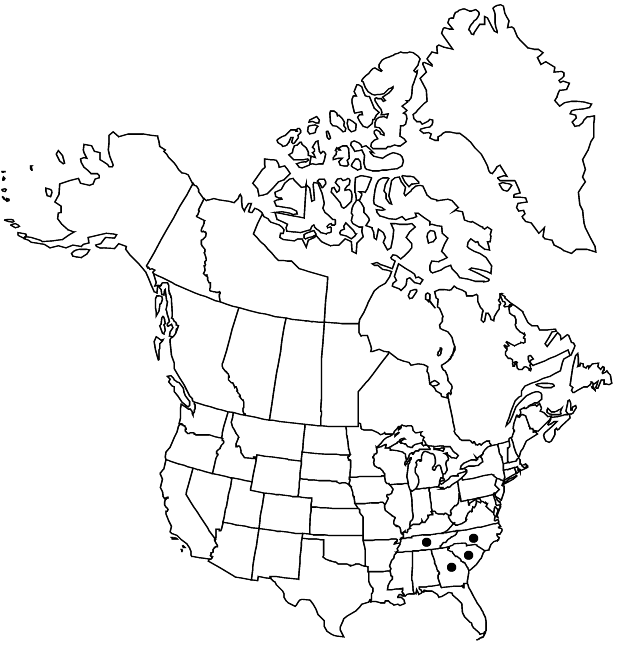Difference between revisions of "Gaylussacia ursina"
Mem. Amer. Acad. Arts, n. s. 3: 49. 1846,.
imported>Volume Importer |
imported>Volume Importer |
||
| Line 63: | Line 63: | ||
|publication year= | |publication year= | ||
|special status=Illustrated;Endemic | |special status=Illustrated;Endemic | ||
| − | |source xml=https:// | + | |source xml=https://bitbucket.org/aafc-mbb/fna-data-curation/src/2e0870ddd59836b60bcf96646a41e87ea5a5943a/coarse_grained_fna_xml/V8/V8_1045.xml |
|subfamily=Ericaceae subfam. Vaccinioideae | |subfamily=Ericaceae subfam. Vaccinioideae | ||
|genus=Gaylussacia | |genus=Gaylussacia | ||
Latest revision as of 22:41, 5 November 2020
Plants 3–10(–15) dm, forming small to extensive colonies; branches spreading; twigs of current season pale green to light brown, sparsely hairy. Leaves: petiole 1–2 mm; blade greenish white abaxially, green to yellowish green or reddish green adaxially, ovate to oblong, 2.5–6 × 2.3–4 cm, membranous, base rounded to cuneate, margins entire, apex acute to acuminate, abaxial surface sessile-glandular, hairy along veins, adaxial surface glabrous. Inflorescences spreading or drooping, 4–6-flowered, bracteate, 0.7–2.5 cm, glabrous; bracts early-deciduous, leaflike, 1–2 mm, shorter than pedicels, glabrous, sessile-glandular. Pedicels 6–9 mm, sparsely hairy (hairs red), sessile-glandular; bracteoles 1–2, 1–1.5 mm. Flowers: sepals 5, 0.5 mm, glabrous, sparsely sessile-glandular; petals 4–5, corolla greenish white, urceolate, 4–5 mm, lobes ovate-deltate, ca. 1 mm; filaments 3–3.5 mm, glabrous; anthers included, 1 mm, thecae not divergent; ovary glabrous. Drupes juicy, sweet, glossy black, 7–10 mm diam., glabrous. Seeds 1 mm, smooth.
Phenology: Flowering late spring.
Habitat: Deciduous or open pine woods (often dominant in Table Mountain Pine-Pitch Pine Woodland), common in moister forests downslope, often associated with Rhododendron maximum
Elevation: 500-1500 m
Distribution

Ga., N.C., S.C., Tenn.
Discussion
Gaylussacia ursina is a southern Appalachian Mountains endemic that often forms large, clonal patches; it is abundant within much of its narrow range.
Selected References
None.
